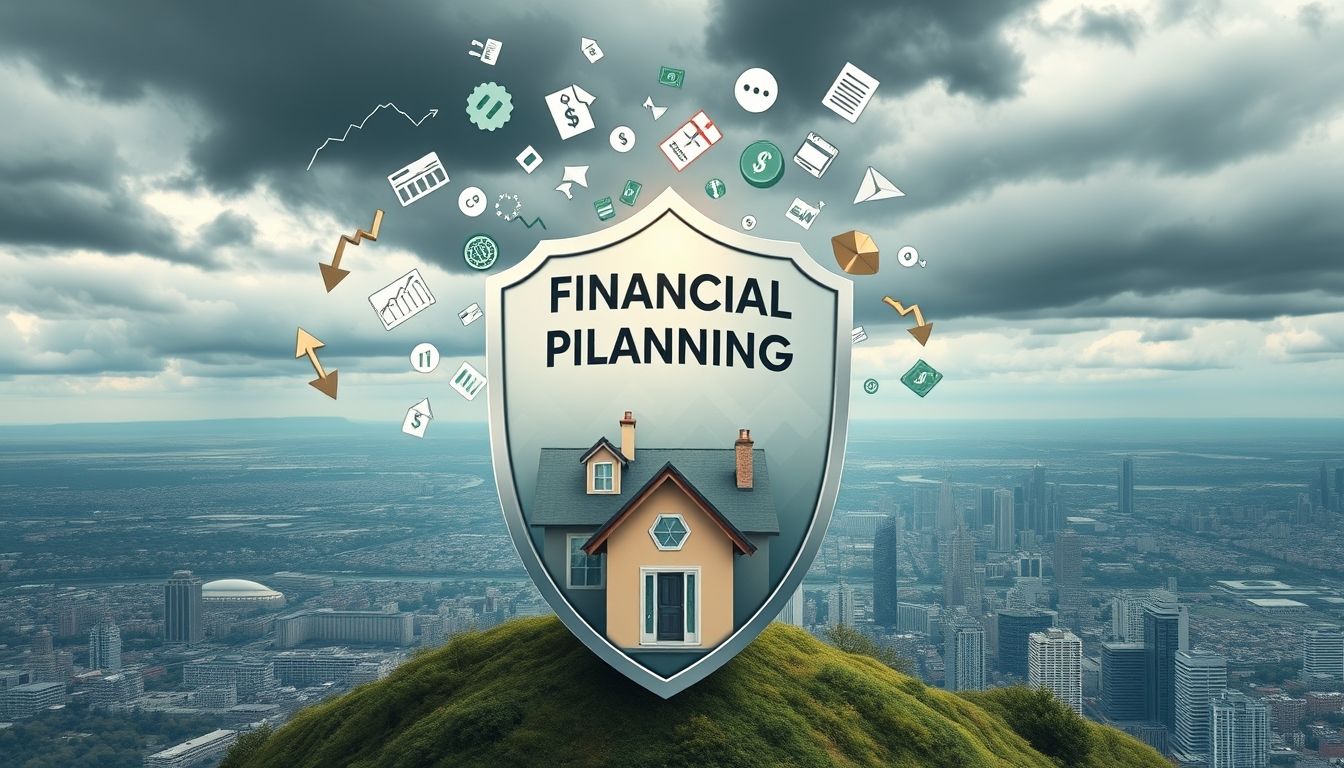Introduction: Why is Emergency Financial Planning Necessary?
In today's world, economic conditions are constantly fluctuating, and the likelihood of facing unexpected crises is increasing. From job loss to emergency medical expenses, to natural disasters, any unforeseen event can negatively impact your financial stability. Emergency financial planning is not just an option, but a necessity to protect yourself and your family from the consequences of these crises.
Chapter 1: Identifying and Assessing Potential Risks
The first step in emergency financial planning is to identify the potential risks you may face. These risks include:
- Job Loss: The possibility of losing your primary source of income.
- Emergency Medical Expenses: Unexpected treatment costs.
- Emergency Home Repairs: Costs of repairing sudden damage to the home.
- Emergency Car Repairs: Costs of repairing the car necessary for transportation.
- Natural Disasters: Costs of damage from earthquakes, floods, and more.
After identifying the risks, assess the likelihood of each risk occurring and its potential impact on your financial situation. Use a table to prioritize risks.
Chapter 2: Creating an Emergency Fund: The Cornerstone of Financial Security
An emergency fund is a savings account dedicated to covering unexpected expenses. The fund should contain enough to cover basic living expenses for at least 3 to 6 months. Start by determining the monthly amount you need to cover your basic expenses (rent/mortgage, food, utilities, transportation, insurance). Then multiply this amount by 3 or 6 to determine the ideal emergency fund size.
Where to Put Your Emergency Fund?
Choose an account with high liquidity and easy access, such as a high-yield savings account or a money market account.
Example: If your basic monthly expenses are $5000, you should have an emergency fund of $15,000 to $30,000.
Chapter 3: Insurance: The Essential Safety Net
Insurance is an essential tool for managing financial risks. Make sure you have the appropriate insurance coverage to protect yourself, your family, and your property. Important types of insurance include:
- Health Insurance: To cover medical expenses.
- Life Insurance: To provide financial support to your family in the event of death.
- Property Insurance: To cover damage to your home and property.
- Unemployment Insurance: To provide temporary income in case of job loss (available in some countries).
- Car Insurance: To cover damages from car accidents.
Review your insurance policies regularly to ensure you have adequate coverage and that it meets your changing needs.
Chapter 4: Reducing Debt: Easing the Financial Burden
Debt increases your exposure to financial risks. Make an effort to reduce your debt, especially high-interest debt such as credit cards and personal loans. Create a debt repayment plan, focusing on the highest interest debt first. Avoid taking on new debt as much as possible.
Tip: Use the snowball method or the avalanche method to pay off debt. In the snowball method, you start by paying off the smallest debt regardless of interest. In the avalanche method, you start by paying off the debt with the highest interest.
Chapter 5: Alternative Income Plan: Diversifying Income Sources
Relying on a single source of income makes you vulnerable in the event of job loss or income reduction. Explore ways to diversify your income sources, such as:
- Freelancing: Offering your services as a freelancer in your area of expertise.
- Investing: Investing your money in stocks, bonds, real estate, and more.
- Renting Property: Renting out an extra room in your home or an investment property.
- Creating an Online Store: Selling products online.
Even a small additional source of income can provide an extra safety net in times of crisis.
Chapter 6: Flexible Budget: Adapting to Changing Circumstances
A fixed budget may not be effective in times of crisis. Create a flexible budget that allows you to adapt to changing circumstances. Monitor your expenses regularly and make adjustments as needed. Look for ways to cut unnecessary expenses.
Tip: Use expense tracking apps to identify areas where you can cut spending.
Chapter 7: Family Emergency Plan: Preparing for Disasters
In addition to financial planning, it is important to have a family emergency plan to prepare for natural disasters or other emergencies. This plan includes:
- Emergency Kit: Contains essential supplies such as water, food, medicine, and first aid.
- Evacuation Plan: Identify safe evacuation routes and a meeting point in case of emergency.
- Contact List: A list of phone numbers for family members, friends, and government agencies.
Review your family emergency plan regularly and update it as needed.
Chapter 8: Credit Management: Maintaining Your Financial Reputation
In times of crisis, you may need to rely on credit. Maintain your good credit reputation by paying bills on time and avoiding exceeding the credit limit on your cards. Monitor your credit report regularly to ensure there are no errors.
Tip: If you are having trouble paying off debt, contact lending institutions to negotiate a new repayment plan.
Chapter 9: Investing Wisely: Achieving Long-Term Growth
Investing is an important part of long-term financial planning. Invest your money wisely in diversified assets to achieve long-term growth. Consult a financial advisor for professional advice.
Warning: Avoid high-risk investments that promise quick returns, especially in times of crisis.
Chapter 10: Review and Update: Planning is an Ongoing Process
Emergency financial planning is not a one-time task. Review your plan regularly and update it as needed to reflect changes in your financial situation and personal circumstances. Make sure your emergency fund is sufficient and your insurance coverage is adequate.
"Emergency financial planning is an investment in your peace of mind."
Conclusion: Financial planning for emergencies and unexpected crises is an ongoing process that requires assessment, planning, implementation, and review. By taking proactive steps to protect your finances, you can minimize the impact of unexpected crises on your financial life and achieve long-term financial stability and security.




